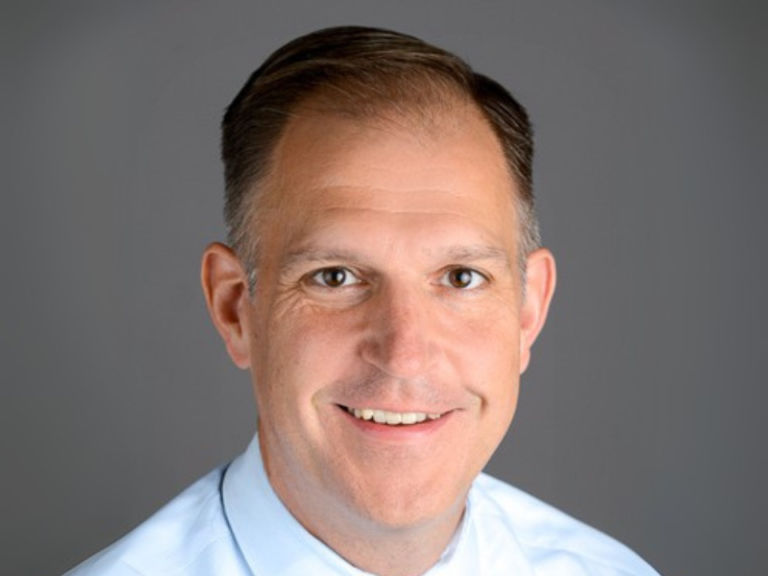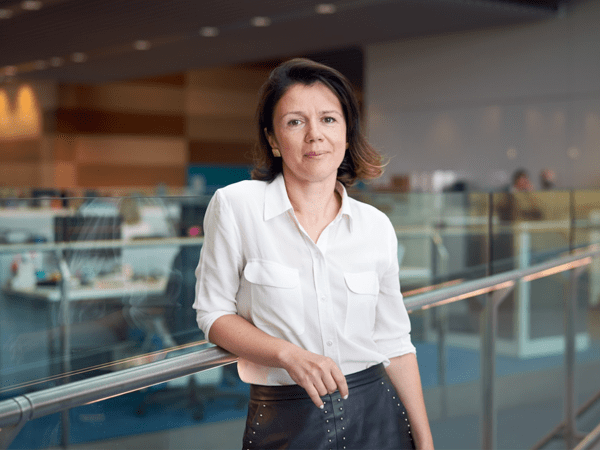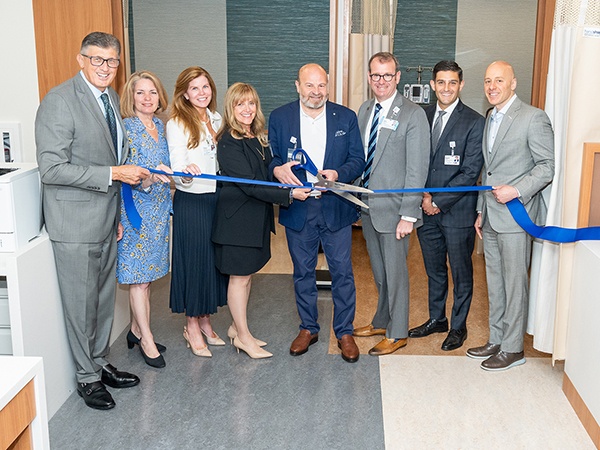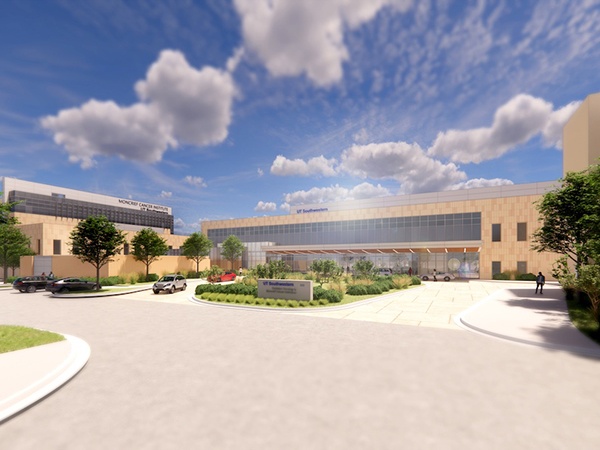Randall F. Holcombe has a goal: earn the NCI designation for University of Vermont Cancer Center. Or, to be precise, earn back the NCI designation.
The UVM Cancer Center held an NCI designation for 30 years until becoming the first comprehensive cancer center not to seek renewal as a comprehensive cancer center in 2008 (The Cancer Letter, Nov. 14, 2008).
“My main goal is to build the research, education, community outreach, and clinical care components of the cancer center over the next three to four years,” Holcombe, director of the UVM Cancer Center, said to The Cancer Letter. “We’ll do that in the model of NCI designated centers, because this will reflect excellence in all of these areas.
“This will put us in a position to submit a successful application for NCI designation. It’s going to take work and substantial institutional support, but I’m optimistic we will get there.”
Holcombe is also the chief of the Division of Hematology and Oncology and a soon-to-be-installed holder of the newly established J. Walter Juckett Chair in Cancer Research. He joined UVM on Aug. 1, after running the University of Hawai’i Cancer Center since 2016. Holcombe’s installation to Juckett professorship is scheduled for Nov. 3.
Jerome Yates, former director of cancer control and former member of the external advisory board at UVM Cancer Center, is banking on Holcombe’s success in regaining the NCI designation.
“The academic and scientific strength at the University of Vermont offer its new cancer center director an opportunity to apply the breadth of his clinical and cancer control skills to resurrect the NCI recognition of the cancer center,” Yates said to The Cancer Letter. “Dr. Holcombe brings a wealth of experience at multiple cancer centers that will enable him to exploit the unique scientific opportunities among laboratory, clinic and regional cancer control efforts in Vermont.”
Though definitions of core grants and cancer centers have changed over the past 50 years, UVM Cancer Center appears to be the only comprehensive cancer center to voluntarily give up an NCI comprehensive designation.
In the 1980s and 1990s, several consortium centers focused on cancer control had either failed in peer review or run out of money. In 2004, the Institute for Cancer Prevention, an NCI-designated institution, spent all its money and closed.
A history of one cancer center, the University of Miami, speaks to the value of an NCI designation. The institution was “identified” as a comprehensive cancer center in 1974, lost its core grant in 1990, and—as Sylvester Comprehensive Cancer Center—earned back the NCI Cancer Center designation in 2019.
Yates and other insiders attribute the UVM Cancer Center’s past problems to decades of minimal commitment from the medical school and the clinical services. This appears to have changed. Richard L. Page, a cardiologist who serves as the current dean of the Larner College of Medicine, is supportive of the plans to earn NCI designation for the cancer center.
“We are excited about Dr. Holcombe. I think we finally have someone who will follow in Irv [Krakoff] and Jerry [Yates’s] footsteps and can bring back the VCC luster, and, hopefully, the reinstatement of its core grant,” said Rosemary W. Mackey, a consultant, who is married to Irwin H. Krakoff, VCC’s first director.
Mackey and Yates sit on the board of the J. Walter Juckett Cancer Research Foundation of Essex Junction, VT, which has funded the Juckett. Also, the foundation has provided funds to make the Krakoff endowed chair into a full professorship and has committed to giving UVM Cancer Center additional $500,000 a year over the next five years.
Holcombe spoke with Paul Goldberg, editor and publisher of The Cancer Letter.
Paul Goldberg: First, congratulations on coming to the University of Vermont—Vermont is a great place to be. And, of course, you are being installed as the J. Walter Juckett professor next month. And the Irwin Krakoff professorship becomes a full professorship at the same time. Lots of people are rooting for you.
Randall F. Holcombe: Many thanks. Vermont has been awesome, and it’s a great honor to be named as the inaugural recipient of the J. Walter Juckett Chair in Cancer Research.
You moved to Burlington from the University of Hawai’i, where you were the cancer center director. What made you decide to take a position at UVM?
RFH: I thought there were great opportunities at the University of Vermont to build on existing research and clinical expertise and help move the cancer program to one that is truly outstanding.
They’ve recently had some changes in both university and cancer center leadership, and it seemed like the right time for someone to provide direction and create a vision based on excellence in research, clinical care, education, and community outreach.
Let’s return to this in a minute. First, can we talk a bit about Hawaii? What was Hawai’i like? When you arrived, there was some rough politics there—I used to get copies of various epistles. And then things appeared to have calmed down.
RFH: The cancer center in Hawaii is NCI-designated and has substantial institutional support. I developed a five-year plan when I went to Hawaii from Mount Sinai in 2016, which included getting the NCI designation renewed, and we had “checked off all the boxes,” so to speak. Really tremendous growth and progress over five years.
I felt that the UH Cancer Center was on a very strong foundation and would have continued success after my departure.
Doesn’t the Hawai’i Cancer Center have the largest catchment area of any U.S. cancer center? A lot of it is water, sure… I am not trying to get us bogged down in trivia, but it would sound like you are comfortable with spread out catchment areas.
RFH: Absolutely. The University of Hawai‘i Cancer Center catchment area covers all of the U.S. Affiliated Pacific Islands, extending 3,000 miles to the West to Guam. The catchment area is, actually, approximately the same size as the whole continental U.S.
The square miles of the University of Vermont Cancer Center is obviously quite a bit less, but many of the challenges related to the burden of cancer in rural populations are the same.
What is the biggest challenge that you see at the University of Vermont Cancer Center?
RFH: We need to increase the level of extramural, cancer-related funding. This is something that will need to be addressed by supporting existing faculty grant submissions, and also the recruitment of new funded investigators—likely five over the next two to three years.
I hope to partner with departments in the Larner College of Medicine and also the College of Nursing and Health Sciences, the College of Agriculture and Life Sciences, among others, in identifying and recruiting talented cancer investigators.
Where do you see the greatest areas of growth for the UVM Cancer Center in the next five years?
RFH: I imagine a major focus on Community Outreach and Engagement that is coordinated from and participated in by members of the cancer center.
I also hope to address cancer provider workforce issues, especially in hematology and medical oncology, and increase the scholarly activities of the clinical members of the cancer center. And, finally, while there is much cancer related education ongoing within the university, it is not currently coordinated optimally by the cancer center–another task where I think we can make great progress.
What do you see as the major opportunities at the University of Vermont Cancer Center?
RFH: This is what is most exciting. There are opportunities to better define a mission to reduce the cancer burden among our rural population by partnering with existing entities, like the UVM Health Network, the Northern New England Clinical Translational Research program, the Maine Medical Research Institute, and, most importantly, by reaching out to, and getting feedback from, community stakeholders.
…we will be focusing in part on issues specific to rural cancer care delivery, cancer prevention and screening in rural populations, and improving outcomes for rural cancer patients.
There are opportunities to partner with the College of Medicine and College of Nursing and Health Sciences in the area of cancer epidemiology, community-based outreach and research, and public health.
There are opportunities to enhance rural cancer care delivery and partner with the Health Services Research Institute at UVM Larner College of Medicine.
There are opportunities to facilitate the development of new approaches to cancer prevention and treatment based on discovery from cancer center laboratory and behavioral scientists. There are opportunities to facilitate the transformation of the UVM clinical cancer program to one wholly focused on improving patient outcomes through advances in the quality and value of care.
Lots of opportunities!
Can you tell me more about the UVM catchment area? A lot of it is in New York. Also, the market—how much care do you provide throughout the catchment area? And, since we are on the subject, could you describe the populations you serve and the kinds of cancer control questions you would be able to address?
RFH: Our catchment area includes the State of Vermont and northeastern New York State. We think of the catchment area as complementary to the UVM Health Network, and extend our cancer prevention and control efforts as broadly as possible.
We do have major network hubs in central Vermont and across Lake Champlain in New York, and I have a vision to better incorporate these sites into our cancer clinical research efforts. Overall, the catchment area is quite rural so, similar to the work at UH, we will be focusing in part on issues specific to rural cancer care delivery, cancer prevention and screening in rural populations, and improving outcomes for rural cancer patients.
UVM Cancer Center lost its NCI designation for the Cancer Center in 2008. Are you planning to try to get it back?
RFH: My main goal is to build the research, education, community outreach, and clinical care components of the cancer center over the next three to four years. We’ll do that in the model of NCI-designated centers, because this will reflect excellence in all of these areas.
This will put us in a position to submit a successful application for NCI designation. It’s going to take work and substantial institutional support, but I’m optimistic we will get there.
Can you tell me about the level of institutional support you are getting? Do you have a sufficient dowry to accomplish your goals?
RFH: There is a great desire and institutional support to build excellence in research, education, community outreach, and clinical care, which downstream will position us to reclaim the NCI designation.
I have resources to make this happen and, since this is a matrix cancer center, I will be partnering with departments within the Larner College of Medicine, and departments in other Schools and Colleges, for key faculty recruitments.
I also think the availability of two associate director positions—or Community Outreach & Engagement and Clinical & Translational Research—will help attract senior leaders with valuable experience in NCI cancer centers.
You went from Hawaii to Vermont. Are you ready for your first Vermont winter?
RFH: I’m no stranger to winter, having worked at Mt. Sinai in New York City and having trained in Boston. I’m looking forward to layering up and welcoming visitors, year-round.
Do you ski?
RFH: I’ve snowboarded but have not been a skier. I plan to learn to cross country ski this coming winter!
Thank you for talking with me. See you on the trails.











